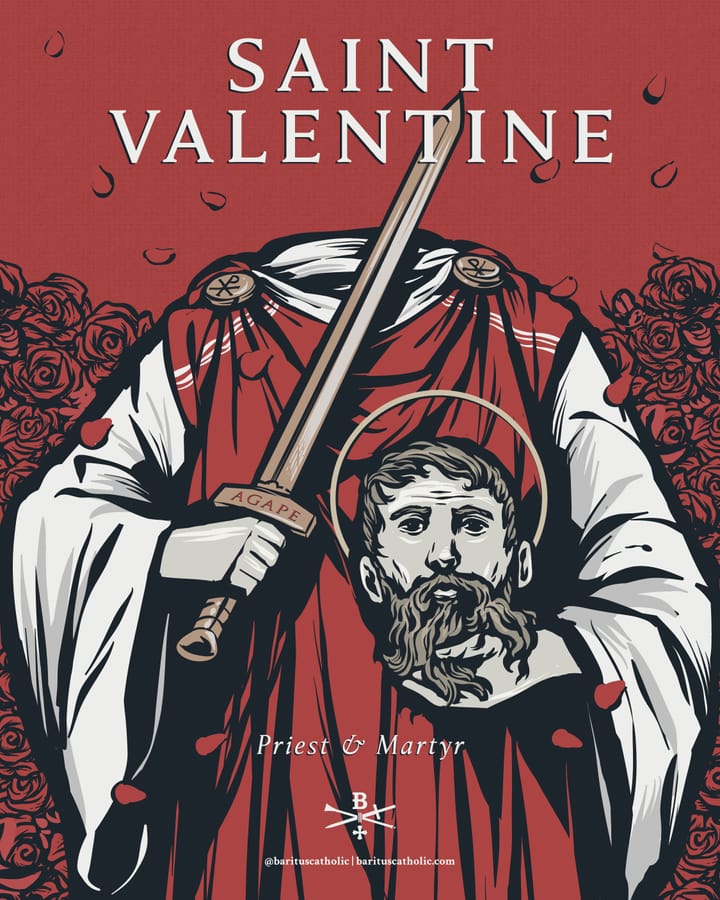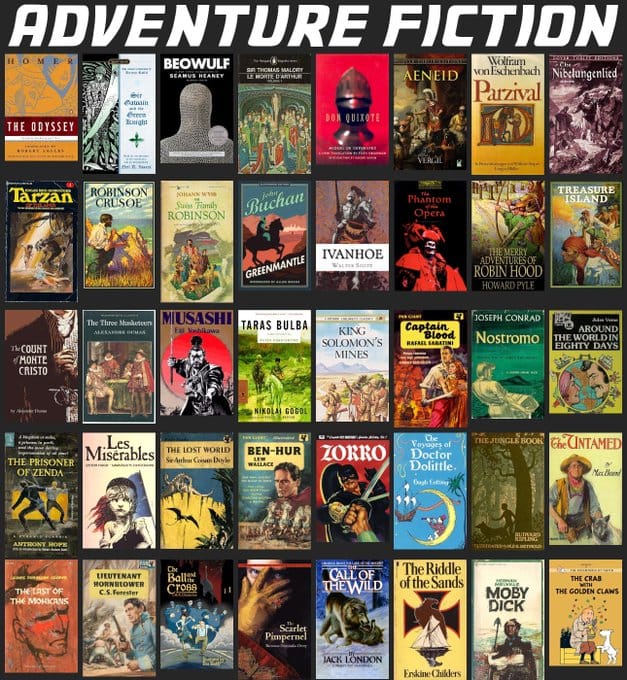The Long View: The Forge of Christendom

Cricketer, historian, and author Tom Holland is here a proponent of the thesis that one of the things that truly differentiates the Christian West, Christendom, is the separation of powers between church and state that gradually evolved out of a fight over who was allowed to nominate bishops.
However, Holland also takes millennialism seriously, which adds a layer of interest for me. For many, it is one of those things that are just not mentioned in polite company. John also mentions here [I think elsewhere too, but I can't find it at present] the idea that Eastern Christianity never really developed the idea of just war. I find the idea intriguing, but I don't know the field well enough to confirm or deny. It is certainly plausible, with the relative unpopularity of Augustine in the Greek-speaking East, but on the other hand, Justinian also sent Belisarius to recover territory lost to Germanic barbarians. On the gripping hand, no one in the Roman empire after Belisarius managed to emulate his military successes.
The Forge of Christendom:
The End of Days and the Epic Rise of the West
By Tom Holland
Doubleday, 2009
512 pages, US$30.00
ISBN-10: 0385520581
ISBN-13: 978-0385520584
(2008 British Edition: Millennium: The End of the World and the Forging of Christendom)
The West has deep roots, reaching down past the Roman Republic to the level where Hellas differentiated itself from the societies of the Near East. Tom Holland, armed with an Oxford doctorate and a rolling prose style that the best Victorians might envy, has already written well-received popular histories on those subjects. (He also does vampire fiction.) Despite the West's continuities with antiquity, however, it's beginning in anything like the sense we mean it today was notoriously discontinuous. In the generation to either side of the year 1000, a new system booted that was clearly distinguishable from its Islamic neighbor and even from its sometime ally in Constantinople. In the author's telling, the first great characteristic act of the young West came at Canossa in 1077, when Holy Roman Emperor Henry IV conceded to Pope Gregory VII a right beyond the power of the state (the right to nominate bishops) in the Investiture Crisis. The concession was only temporary, and Gregory died in frustrated exile, but the pope's point stuck. Thereafter, the political and religious were recognized as different spheres with enforceable borders; the beginning of all civil liberties. This was something new in the world, but it was not the only novelty of the new society.
The two centuries that the book covers in detail, the 10th and the 11th, are among those stretches of history that make almost novelistic sense. The plot is driven by fear of the imminence of Antichrist and the hope for the Parousia.
The question of millennial expectation connected with the year 1000, whether that fear was important or even whether it existed at all, is one of those historiographical controversies that are prone to coup and counter-coup. 19th-century Romantic historians painted a dramatic and, well, Romantic picture of popular enthusiasm and even frenzy. The Romantics' successors, sometimes exaggerating what their predecessors had actually claimed, said the “terrors of the Year 1000” were a 19th-century myth and that the change of the millennium was little regarded at the time. Late in the 20th century, the American medievalist Richard Landes reopened the question (disclosure: I the reviewer am a member of his Center for Millennial Studies). His assessment informs Holland's book.
There was no revolutionary millenarianism around the year 1000 like that which occurred in late medieval or early modern times, Landes noted, but the fact is that the intellectual and political life of those generations was suffused by the preparation for a new age, impelled by a mood of expectation that had both a popular and an elite dimension. There was quite a bit of interest in the year 1000 itself. (Yes, people did know when it was: the information was available in every set of tables showing the dates for Easter.) There was at least as much interest in the year 1033, however, the millennial anniversary of Christ's Passion. One could argue that the West was actually born in the intervening years.
The term “postmillennialism” does not occur in this book, but something very similar to that doctrine was at work in the 11th century. Postmillennialism posits that Christ will return at the end of the Millennium; the millennial age itself, then, is a historical period during which human effort will perfect the world in preparation for that event. Postmillennialism was closely connected with the progressive, reformist Social Gospel that underlay much of the politics of the early 20th century. The idea of historical progress is really just a politely secularized version of postmillennial eschatology.
Medieval eschatology was different in detail but not in effect. St. Augustine in the fifth century (when the world did indeed seem to be ending, by any reasonable measure) had cautioned against the idea of a literal millennium as a period of historical felicity lasting 1000 years, though the Book of Revelation does mention a thousand-year reign of the Saints. He also cautioned against the temptation to apply information in the Bible to historical events in order to calculate precisely when the Second Coming would occur. He did, however, suggest that the reference in the Book of Revelation to a “millennium” could be taken as an allusion to an age of indefinite duration following the establishment of the Church by Christ that will end with his Second Coming.
In the tenth century, the condition of Western Christendom was dire enough to suggest that maybe the end was near and the 1000 years should be taken literally after all. In that century and the eleventh, sophisticated clerics tended to vehemently deny the possibility of predicting the End Time using calculations drawn from the Bible, all the while assuming a near-term eschaton in their worldview and planning.
The imminence of Doomsday had practical implications for medievals. Before the advent of Antichrist set the dramatic machinery of Revelation in motion, the world must first be evangelized and set to rights. This implied the revival or restoration of the Roman Empire in Christian form; even before Constantine, Christians had come to regard the Empire as “the Restrainer” of Second Thessalonians, the power in the world whose presence prevented the eruption of the worst historical evils, and whose final withdrawal would mean the end of the age. In the Byzantine Empire, where Rome never entirely fell, the hope for a penultimate age of peace became centered on the figure of the Emperor of the Last Days. He would restore the ancient empire and end his career by laying down his crown at Jerusalem, thereby marking the beginning of the end. This idea was easily transferable to the West, particularly after Charlemagne revived the imperial title in 800. (That was another possible date for the beginning of the endtime, by the way, arrived at through another set of calculations based on the seven-millennium model of history.)
We should recall that there is little institutional continuity between the Carolingian Empire and the Holy Roman Empire. The last Carolingian “emperor” died in 905, long after anything resembling an empire had lapsed. The title was revived in 962 by Otto I, who had won the Battle of the Lech against the then-pagan Hungarians in 955. Both events were part of a process that solidified the idea of a German identity. Not incidentally, the battle also ended one of the several existential threats to the still inchoate West that were defeated in the decades before 1000.
The author emphasizes that Christendom was born in a near-death experience. The measure of security that Charlemagne had been able to bring to Europe scarcely survived him. From the east came Slavs and Hungarians. In the south were the Muslims: Sicily was an emirate for much of the period covered by this book, and corsairs sacked St. Peter's in Rome as late as 846. In the north and on all the coasts there were the Vikings, and in France there were the French.
“France,” “French,” “Germany,” “German”: all are anachronistic terms for this period, the author reminds us. “East Francia” and “West Francia” are better. Be that as it may, one of the themes of the ninth and tenth centuries was the trend among the elites in what would become France toward pure predation. In most of Europe, castles were usually places of refuge or barriers against barbarian invasion. In France, they were often prison towers to facilitate the plundering of the population and attacks against the bandit lords in the neighboring castles.
In such a situation, anyone who could impose legitimate order was clearly doing God's will, even if violence was necessary to do it. When bishops consecrated German kings, they left no doubt that one of their duties was to defend their people from their appalling enemies. The papacy began a practice of endorsing campaigns in Italy and Spain for the defense of Christian polities. The practice would evolve into the theory of the crusade.
This was in marked contrast to the Byzantine Empire, a church-state that regarded war as the greatest of evils. The Orthodox Church never developed an analogue of the theory of the Just War. The state favored defensive fortress warfare and acute diplomacy to solve its problems. Despite the contempt this posture often inspired in the Latin West, it worked at least as well against the Muslims as the Western preference for the offensive. At any rate, it did until the Battle of Manzikert in 1071, when a fresh invasion of Turks caused the collapse of the Byzantine Empire in Anatolia. That defeat set the events in train that would lead to the request for help from Constantinople to the West that sparked the First Crusade. The book ends with the capture of Jerusalem in 1099.
On the level of diplomacy and military affairs, the elites of the West were often sidetracked by impractical schemes of universal empire. They did nation-building, but by accident; what really interested them was universal empire, always with an eschatological dimension. That dimension was no less present in the reform of civil life, however, and usually to better effect.
Any outburst of disorder was regarded by medievals as a precursor of Antichrist, or at least a type. The violence of the lawless aristocracy of the West was just as evil and intolerable as the depredations of the Hungarians, and just as much a sign of the endtime. The remedy in this context was not counter-violence, but holy example, particularly holy example as set by the most innovative monasteries. The most important monastery of all, perhaps as important for the reform of the West as the papacy itself, was the monastery at Cluny, founded in 910:
Earlier generations of monks, following the prescriptions of their rule, had devoted themselves to manual labour, so as to display humility, and to scholarship, so as to train their souls; but the monks of Cluny had little time for either activity. Instead, hour after hour, day after day, year after year, they sang the praises of the Lord: for this, in heaven, was what the choirs of angels did. Indeed, on one occasion, it was claimed, a monk had ended up so lost in his devotions that he had actually begun to levitate. Prayers and hymns, anthems and responses: the chanting never stopped. [Abbot] Odo had required his brethren to recite one hundred and thirty-eight psalms a day: more than three times what had traditionally been expected of a monk. Barely a minute of a Cluniac's life went by, in short, but it was governed by ritual, as unwearying as it was implacable. Hence, for its admirers, the monastery's unprecedented nimbus of holiness: "for so reverently are the masses performed there,” as Rudolf Galber put it, “so piously and worthily, that you would think them the work, not of men, but of angels indeed.”
Cluny, at least in this telling, was Shangri-La, but a Shangri-La that succeeded in projecting its inner peace onto much of the outer world. The monastery was an important element in organizing the Peace of God Movement, under which the armored aristocracy swore before bishops and huge assemblies of peasants to respect the lives and property of the general population. The movement went on for decades, and as the author notes, it implied the formalization of a social structure based on the private appropriation of what had once been common property. Nonetheless, the commoners apparently believed that even an unequal law was better than no law. The Peace of God was not the Millennial Kingdom, but it was regarded as a preparation for that no longer distant prospect. As it ran its course, everywhere the cathedrals were built, and the landscape took on the look of ordered settlement.
Meanwhile, the borders of Christendom were expanding through missionary effort. The author plainly admires St. Adalbert, who left important posts at Magdeburg and Rome to die a martyr in 997 in the evangelization of the east. The conversion of the rulers of the Scandinavians and the Normans (and of the Russians, for that matter) seems to have been marked by a fair amount of Realpolitik. They had a lively sense that a Christian king or duke had far more legitimacy than even the most successful tribal plunderer. These accessions left the heartlands of Christendom more secure. Nonetheless, they too were evidence that the end was near, since the end could come only after the remotest parts of the world had heard the Gospel. Surely newly Christian Iceland was as remote was it was possible to be?
Much of the book's attention is given to Spain, where the famously wealthy and sophisticated Caliphate of al-Andalus made one last drive against Christian Leon before imploding from its own internal divisions. The recapture by Christian forces of the ancient Visigothic holy city of Toledo put the strategic position of Moorish Spain past remedy.
Fatimid Egypt also comes into the picture. Caliph al-Hakim entertained eschatological notions, in his case centered on himself. His destruction of the Church of the Holy Sepulcher at Jerusalem in 1009 simultaneously appalled the West and confirmed its view that the climax of history could not be far off. (Latterly, in some tellings, he joined the ranks of Hidden Imams; he is still venerated or worshipped by the Druze, depending on whom you ask.)
Though the West still interacted with Islam and with the Byzantine Empire in important ways, by some point in the 11th century it had become an “intelligible unit” in Toynbee's sense of “civilization,” a society with a story that can be understood only on its own terms.
The author allows the text to reflect the sources, usually to good effect. If someone said they saw a dragon, then they saw a dragon; why argue about it, since the dragon is rarely the point of the story? When the author wants to be critical, he lays on the solemnity a bit too thick, which is actually a very medieval thing to do. The downside of this approach is that the text glides over points that are controverted. It is also economical of explanatory digressions. Still, any reader who does not know about the filioque clause will no doubt find everything he needs in the substantial bibliography and large number of footnotes. This book is a delight to read.
Copyright © 2009 by John J. Reilly

The Forge of Christendom: The End of Days and the Epic Rise of the West By Tom Holland



Comments ()